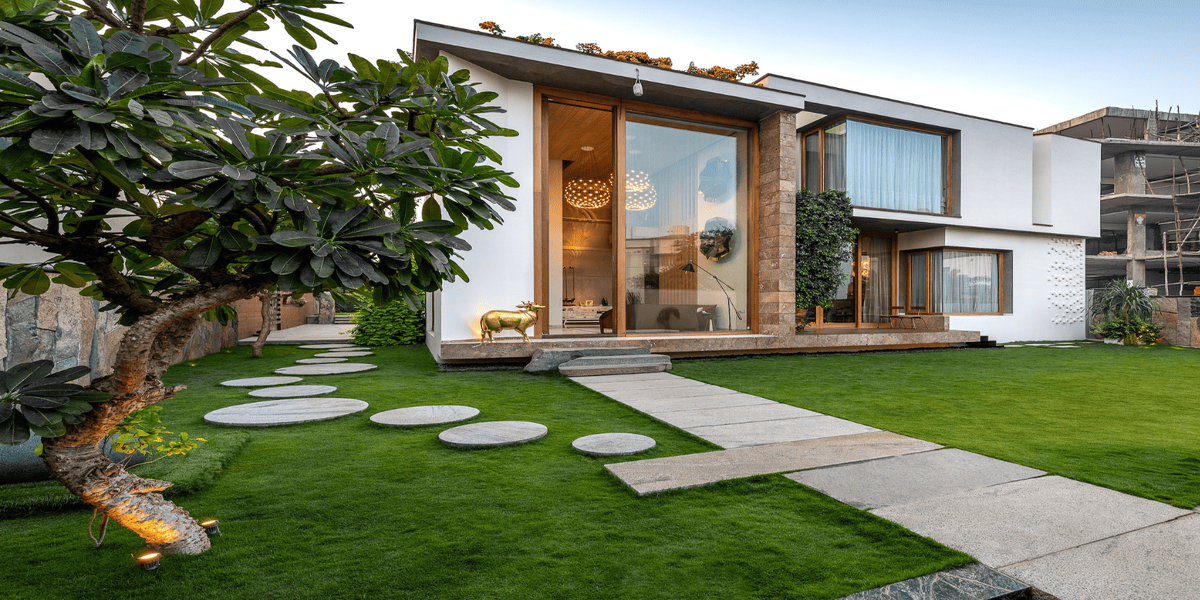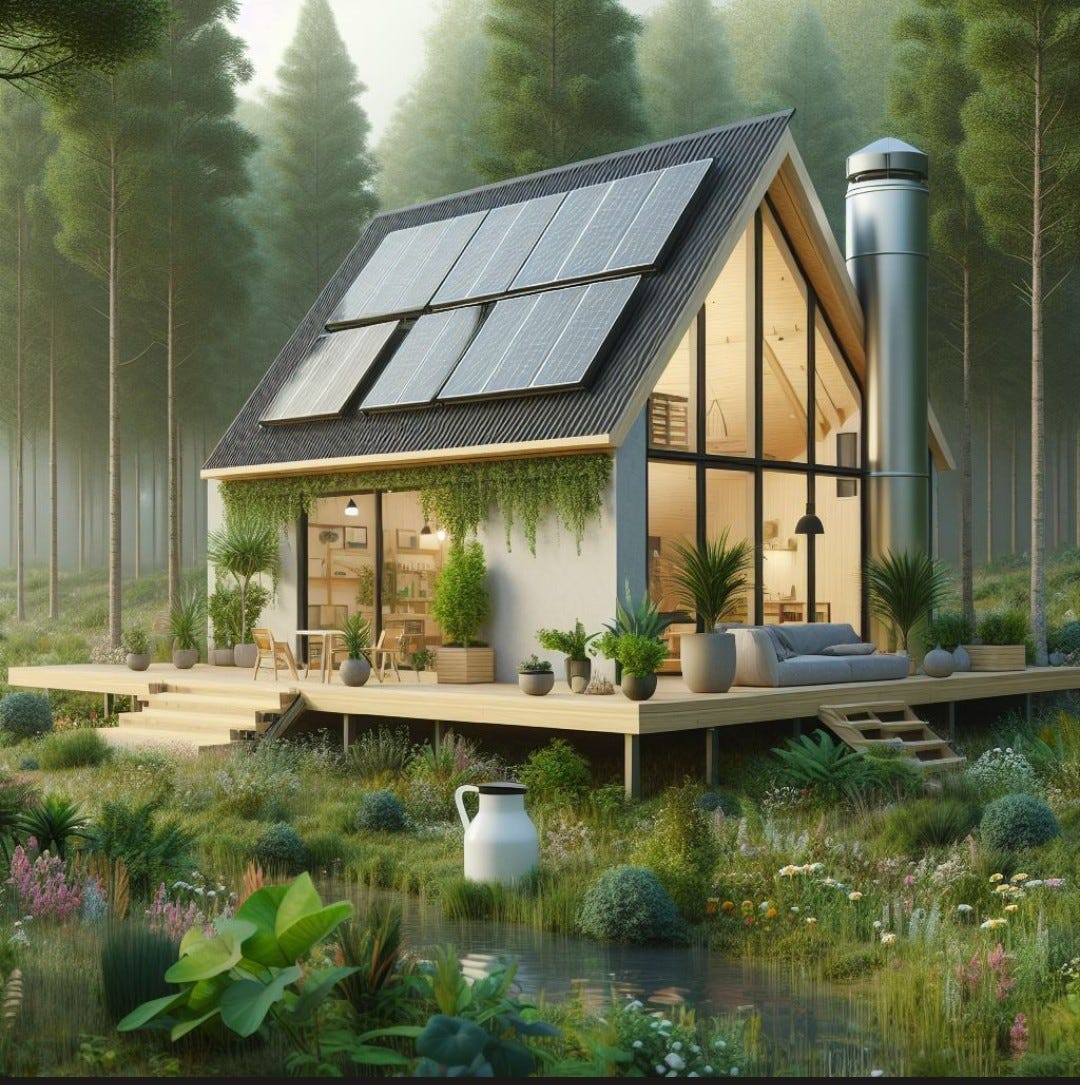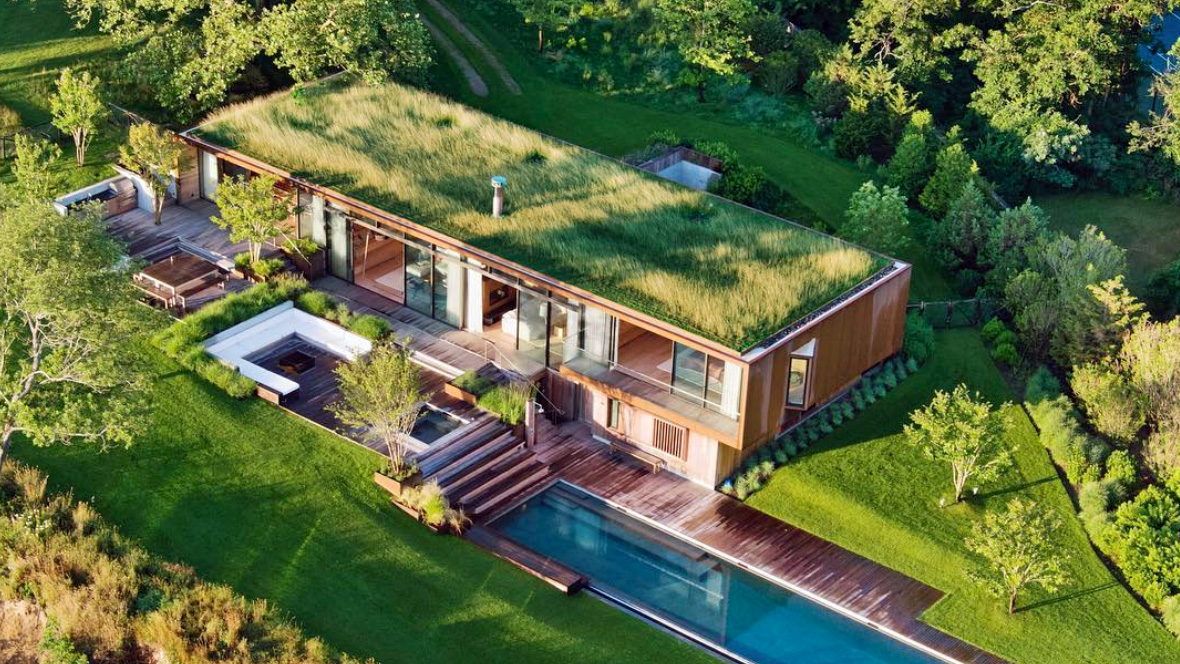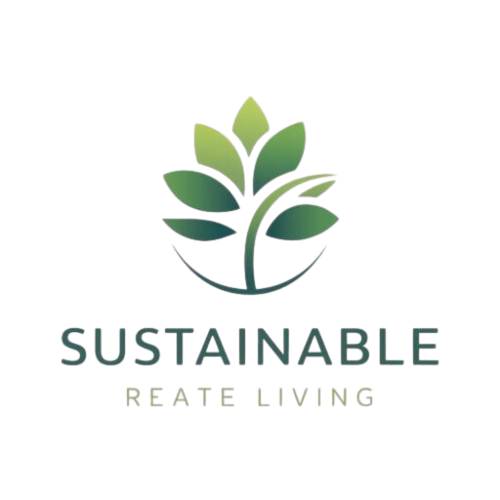Modern eco-friendly homes are designed with the environment in mind. They use sustainable materials and energy-efficient systems to reduce their impact on nature.
As more people become aware of climate change, the demand for eco-friendly homes rises. These homes offer smart solutions for living comfortably while protecting our planet. They often feature solar panels, energy-efficient appliances, and recycled materials. Homeowners can save money on energy bills and enjoy healthier living spaces.
Eco-friendly homes also promote a sense of community as people connect over shared values. This shift toward sustainability is not just a trend; it’s a movement. Discover how modern eco-friendly homes can change the way we live and help create a better future for everyone.
Introduction To Eco-friendly Homes
Eco-friendly homes are becoming popular. They focus on sustainability and energy efficiency. Many people want to live in a way that protects our planet. This shift reflects a growing awareness of environmental issues. Modern eco-friendly homes offer comfort and style while being kind to nature.
These homes use green materials and smart designs. They minimize waste and reduce energy use. Homeowners can feel good about their choices. They contribute to a healthier world. Understanding this trend helps everyone appreciate the benefits of eco-friendly living.
The Rise Of Green Living
Green living is now a lifestyle choice for many. People seek ways to reduce their carbon footprints. They want to make choices that benefit the environment. Eco-friendly homes are a big part of this movement.
More builders focus on sustainable practices. They use renewable resources and energy-efficient systems. Homeowners embrace solar panels and rainwater collection. These features lower utility bills and save energy.
Benefits Of Sustainable Home Design
Sustainable home design has many benefits. First, it lowers energy costs. Eco-friendly homes often use less energy than traditional homes. This saves money in the long run.
Second, these homes provide a healthier living space. They often use non-toxic materials. Better air quality improves health for all who live there.
Lastly, eco-friendly homes increase property value. Many buyers look for energy-efficient features. A well-designed sustainable home attracts more interest.
Key Features Of Sustainable Homes
Modern eco-friendly homes focus on energy efficiency and sustainability. They often feature solar panels, rainwater harvesting, and natural materials. These homes reduce environmental impact while providing a comfortable living space.
Sustainable homes are gaining popularity as more people seek to reduce their environmental impact. These homes not only provide comfort and style but also integrate features that promote sustainability. Understanding the key features of these eco-friendly spaces can help you make informed choices for your own home.
Energy Efficiency Standards
Energy efficiency is a cornerstone of sustainable homes. These homes often meet strict energy standards that minimize energy consumption. – Quality Insulation: Effective insulation helps maintain a consistent indoor temperature, reducing heating and cooling needs. – Energy Star Appliances: Using appliances that meet Energy Star ratings can significantly lower your energy bills. Have you considered how much energy your current appliances consume? Upgrading to energy-efficient options can be a game-changer.
Natural Material Usage
Choosing natural materials is essential for creating a sustainable home. Materials like bamboo, reclaimed wood, and recycled metal not only reduce waste but also provide a unique aesthetic. – Low-VOC Paints: These paints improve indoor air quality by minimizing harmful emissions. – Sustainable Flooring: Options like cork and linoleum are biodegradable and often sourced from renewable resources. Imagine walking into your home and feeling the warmth of natural materials around you. It can change the way you experience your living space.
Water Conservation Techniques
Water conservation is a critical feature of sustainable homes. Implementing various techniques can help you reduce water usage without sacrificing comfort. – Rainwater Harvesting: Collecting rainwater for irrigation or other non-potable uses can significantly cut down your water bill. – Low-Flow Fixtures: Installing low-flow faucets and showerheads can save gallons of water daily. Have you thought about how much water you waste each day? Simple changes can lead to substantial savings, both financially and environmentally. By focusing on these key features, you can create a home that is not only beautiful but also sustainable. How will you make your home more eco-friendly?
Design Principles For Modern Eco Homes
Modern eco-friendly homes focus on sustainability and energy efficiency. Key design principles include using natural materials, maximizing natural light, and incorporating green technologies. These homes promote a healthier living environment while reducing environmental impact.
Design Principles for Modern Eco Homes Creating a modern eco-friendly home involves thoughtful design principles that prioritize sustainability. These principles not only promote environmental health but also enhance your living experience. Let’s explore some key aspects that make eco homes truly stand out.
Integration With Nature
A successful eco home seamlessly blends with its surroundings. Large windows and open floor plans invite natural light and provide views of the outdoors. You might consider adding a green roof or vertical garden to further connect with nature. Using local materials can also minimize your home’s carbon footprint. Imagine walking into your living room and seeing reclaimed wood beams sourced from a nearby barn. This connection to local resources fosters a sense of community and reduces transportation emissions. Think about outdoor spaces too. A well-designed patio or garden not only enhances beauty but also encourages outdoor living. How often do you find yourself enjoying a morning coffee surrounded by greenery?
Minimal Environmental Impact
Reducing waste and conserving resources are at the heart of eco-friendly design. Selecting low-VOC paints and finishes can significantly improve indoor air quality. You’ll breathe easier knowing your home is healthier for you and the planet. Efficient insulation plays a crucial role in minimizing energy use. Proper insulation keeps your home warm in winter and cool in summer. This not only lowers energy bills but also reduces reliance on heating and cooling systems. Consider using furniture and decor made from sustainable materials. Bamboo and recycled metals are excellent choices that add style without harming the environment. Have you ever thought about how your furniture choices impact the planet?
Renewable Energy Sources
Utilizing renewable energy is a key principle in modern eco homes. Solar panels can significantly reduce your electricity costs and carbon footprint. Imagine generating your own energy while enjoying sunny days. Wind turbines are another option, particularly in areas with consistent winds. Even small turbines can provide enough energy for your home. Have you looked into the energy sources available in your region? Incorporating energy-efficient appliances further enhances sustainability. These appliances use less water and electricity, making them a smart choice for eco-conscious homeowners. Consider how much you can save by upgrading your old appliances. Embracing these design principles can transform your home into a sanctuary for both you and the environment. Are you ready to take the plunge into a more sustainable lifestyle?

Innovative Building Materials
Modern eco-friendly homes focus on using new materials. These materials help reduce waste and energy use. They also support sustainable living. Homeowners want options that are good for the planet. Innovative building materials are key to this trend.
Recycled And Upcycled Options
Recycled materials come from old buildings and products. They find a second life in new homes. For example, reclaimed wood is popular. It adds character and reduces deforestation. Recycled glass can be used for countertops and tiles. This creates beautiful surfaces while saving resources.
Upcycled materials also play a big role. These items are creatively repurposed. A worn-out door can become a table. Old metal can be turned into art. These options not only save money but also tell a story. Every piece has a history. It makes homes unique and interesting.
The Role Of Technology In Material Innovation
Technology is changing how we think about building materials. New methods make materials stronger and lighter. 3D printing can create custom pieces from sustainable substances. This saves time and reduces waste.
Smart materials respond to their environment. They can adjust to temperature changes. This improves energy efficiency in homes. New insulation materials keep homes warm in winter and cool in summer. Technology helps create a balance between comfort and sustainability.
Smart Home Technologies For Efficiency
Smart home technologies help make eco-friendly living easier. They improve efficiency and reduce waste. Homeowners can control energy use with simple tools. These technologies support a sustainable lifestyle.
Automation For Sustainable Living
Automation makes daily tasks simpler. Smart devices can adjust lighting based on natural light. They turn off appliances when not in use. This reduces energy waste.
Smart thermostats learn your schedule. They adjust heating and cooling automatically. This keeps homes comfortable and energy-efficient.
Automated irrigation systems help gardens thrive. They water plants only when needed. This saves water and keeps plants healthy.
Energy Monitoring Systems
Energy monitoring systems track energy use. Homeowners can see where energy is spent. This helps identify areas to save.
Some systems send alerts for high energy use. They help you change habits and cut costs. Understanding usage is the first step to efficiency.
These systems can integrate with smart devices. They provide a complete view of energy consumption. This makes it easier to live sustainably.
Landscaping And Outdoor Sustainability
Modern eco-friendly homes focus on sustainable landscaping. They use native plants, reduce water waste, and promote biodiversity. These practices create beautiful outdoor spaces while protecting the environment.
Landscaping and outdoor sustainability are essential elements of modern eco-friendly homes. They not only enhance the beauty of your property but also contribute significantly to the environment. By choosing the right plants and features, you can create a serene outdoor space that supports local ecosystems and conserves resources.
Native Plants For Eco-friendly Gardens
Using native plants in your garden is one of the easiest ways to promote sustainability. These plants are adapted to your local climate and soil, meaning they require less water and fewer chemicals to thrive. – Lower Maintenance: Native plants need less care. They are more resilient against pests and diseases, reducing the need for pesticides. – Biodiversity Support: They provide food and habitat for local wildlife, like birds and butterflies. This helps maintain a balanced ecosystem in your backyard. Have you ever noticed how a garden filled with native flowers attracts pollinators? This simple choice can transform your outdoor space into a vibrant ecosystem. Consider creating a pollinator garden. Use a mix of native flowers that bloom at different times to ensure a continuous food source. Not only will your garden look beautiful, but you’ll also be supporting crucial species.
Sustainable Water Features
Water features can enhance the tranquility of your outdoor space, but they can also be environmentally friendly. Choosing sustainable options can reduce water usage and benefit local wildlife. – Rain Gardens: These are designed to absorb rainwater and prevent runoff. They filter pollutants and provide a habitat for various species. – Recirculating Fountains: These features reuse water instead of wasting it. They create soothing sounds while being gentle on your water bill. Have you considered adding a small pond or a birdbath? These features not only beautify your garden but also attract wildlife. Utilizing a rain barrel can also make a difference. Collect rainwater from your roof to water your garden, reducing reliance on municipal water sources. By making thoughtful choices in your landscaping, you can create a stunning outdoor area that supports sustainability. What changes will you make to enhance your garden’s eco-friendliness?
Costs And Savings Of Eco-friendly Living
Making the switch to an eco-friendly home can feel daunting, especially when it comes to understanding the costs involved. You might wonder if the initial financial outlay is worth the long-term savings. Let’s break down the realities of costs and savings in eco-friendly living.
Initial Investment Vs. Long-term Savings
Eco-friendly homes often require a higher initial investment. Energy-efficient appliances, solar panels, and sustainable materials can add up quickly. However, these costs can lead to significant savings over time.
Think about energy bills. Many homeowners report reductions of 30% or more after switching to green technologies. For instance, my friend installed solar panels last year and has already noticed a drastic drop in her monthly energy costs.
Additionally, green homes tend to have lower maintenance costs. Durable materials and high-quality construction mean fewer repairs and replacements. Consider it an investment in both your wallet and the environment.
Incentives And Rebates For Green Homes
Many governments and organizations offer financial incentives for eco-friendly upgrades. These can significantly offset your initial costs. Research local programs that provide rebates for solar installations or energy-efficient appliances.
Some states have tax credits specifically for green home improvements. These credits can reduce your taxable income, providing immediate financial relief. It’s essential to check eligibility for these programs as they can vary widely.
Don’t overlook utility companies that often provide incentives for energy-saving upgrades. They may offer discounts or rebates to encourage you to make eco-friendly choices. Taking advantage of these can make your transition smoother and more affordable.
Have you checked what incentives are available in your area? You might be pleasantly surprised by what’s out there to support your eco-friendly journey.

Case Studies: Eco Homes Around The World
As the world embraces sustainability, many innovative eco-friendly homes are emerging globally. These homes not only reduce environmental impact but also enhance the quality of life for their residents. Let’s dive into some inspiring case studies that showcase how different regions tackle eco-friendly living.
Innovations In Different Climates
Eco homes vary significantly based on their climates. In warmer regions, homes often use natural ventilation and solar panels to maximize energy efficiency. For instance, the Earthship homes in New Mexico utilize recycled materials and passive solar heating to maintain comfortable indoor temperatures.
In colder climates, homes are built to retain heat. The Passive House in Berlin is a remarkable example, featuring super-insulated walls and triple-glazed windows. This design reduces energy consumption by up to 90% compared to traditional houses.
Have you ever thought about how the climate influences the design of eco-friendly homes where you live? Each adaptation offers unique insights into creating a sustainable lifestyle.
Community Impact And Lifestyle Changes
Living in eco-friendly homes often inspires a shift in community dynamics. For example, the community of BedZED in the UK promotes a lifestyle that prioritizes local resources and public transport. Residents not only live sustainably but also engage in community gardening and resource-sharing initiatives.
Such changes lead to stronger relationships among neighbors and a shared commitment to sustainability. When people come together, the impact is magnified. You might find yourself motivated to join local eco-initiatives or start one in your neighborhood.
Consider how your living environment affects your lifestyle choices. Would you be open to adopting eco-friendly practices if they became part of a community effort?
Building Your Own Eco-friendly Home
Building an eco-friendly home is a great choice. It helps the environment and can save money. Small changes make a big difference. You can create a space that is good for you and the planet.
Follow these steps to start your journey. Make informed choices. Your dream eco-home can be a reality.
Steps To Get Started
Begin with a clear plan. Think about your needs and budget. Research eco-friendly materials. Look for options like bamboo, recycled steel, and insulation made from natural fibers.
Next, consider energy efficiency. Choose solar panels or wind turbines. These can reduce energy costs. Make sure your home has good insulation. This helps keep it warm in winter and cool in summer.
Finally, focus on water conservation. Install low-flow fixtures and a rainwater harvesting system. These will help you save water and reduce bills.
Choosing The Right Professionals
Selecting the right people is key. Look for architects and builders who specialize in eco-friendly designs. Ask about their experience with sustainable projects.
Check their certifications. Make sure they understand green building practices. A good team will help bring your vision to life.
Don’t forget to consult with environmental experts. They can provide advice on materials and energy systems. This will ensure your home is truly eco-friendly.

The Future Of Sustainable Housing
Modern eco-friendly homes are changing how we think about living. They offer a path to a greener future. As climate change grows, sustainable housing becomes essential. It helps reduce our impact on the planet. New designs use less energy and focus on nature. This shift benefits both people and the environment.
Emerging Trends In Eco-friendly Architecture
New trends in eco-friendly architecture are exciting. Many homes now use sustainable materials. Bamboo, reclaimed wood, and recycled steel are popular choices. These materials are strong and eco-friendly.
Solar panels are becoming standard. They help homes generate their own energy. Green roofs are also on the rise. They improve insulation and help manage rainwater. Smart home technology plays a big role too. It helps save energy and makes life easier.
Policy And Environmental Considerations
Policies are evolving to support sustainable housing. Governments are offering incentives for eco-friendly homes. Tax breaks and grants help reduce costs. This encourages builders to adopt green practices.
Environmental considerations are crucial. Homes must be built with the local ecosystem in mind. Choosing the right location can reduce energy use. Homes should blend with nature, not disrupt it. Sustainable housing leads to healthier communities. It creates a better future for everyone.
Frequently Asked Questions
What Is The Most Eco-friendly Type Of House?
The most eco-friendly type of house is a passive house. It maximizes energy efficiency through superior insulation and ventilation. Sustainable materials and renewable energy sources also contribute to its eco-friendliness. Green roofs and rainwater harvesting systems enhance sustainability, reducing the overall environmental impact.
How Much Does It Cost To Build An Eco-friendly House?
Building an eco-friendly house typically costs between $150 to $300 per square foot. Factors influencing the price include location, materials, and design complexity. Investing in energy-efficient features may increase initial costs but can lead to long-term savings. Always consider your budget and sustainable options.
What Is The Disadvantage Of Eco Homes?
Eco homes can have higher upfront costs due to sustainable materials and technologies. They may require specialized knowledge for construction and maintenance. Limited availability in some areas can restrict choices. Some eco-friendly features may not perform as well in extreme climates, affecting comfort and efficiency.
What Is The Most Sustainable House In The World?
The most sustainable house in the world is often considered to be the “Earthship. ” This off-grid home uses recycled materials and relies on solar and wind energy. Earthships maintain temperature naturally and manage water sustainably, making them an eco-friendly choice for modern living.
Conclusion
Modern eco-friendly homes are more than a trend. They offer comfort and sustainability. These homes help reduce energy costs and protect the environment. Simple changes can make a big difference. Using renewable materials and efficient designs is key. Everyone can enjoy a greener lifestyle.
Investing in eco-friendly features benefits both the planet and your wallet. Embrace the future of living. Choose a home that respects nature. Your choice can inspire others to follow. Let’s build a sustainable world together.
